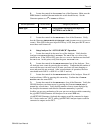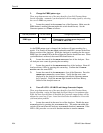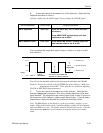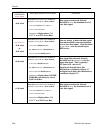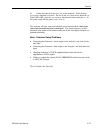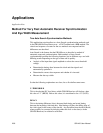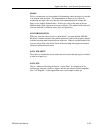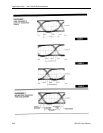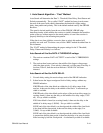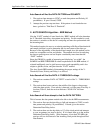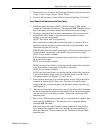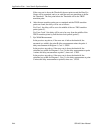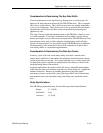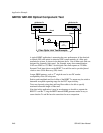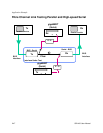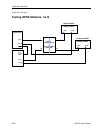
Application Note - Auto Search Synchronization
GB1400 User Manual 2-41
I. Auto Search Algorithm – “Fast” Method
Auto Search will determine the Data V- Threshold, Data Delay, Data Pattern and
Polarity automatically. The so called “FAST” method has been given its name
because of the speed with which it determines the threshold voltage setting,
delay, data pattern and polarity. This is the default method used by the GB1400
Receiver.
The speed is derived mainly from the use of the GB1400’s PHASE edge
detection circuitry which enables the receiver to quickly determine the transition
points of the eye without regard to the actual pattern, or even if the receiver is
properly linked up to the incoming data pattern.
If the data is not clean (glitches, excessive jitter or noise) this method will
possibly not work well. For these cases, use the “BER” method described later in
this document.
The “FAST” method of determining the proper settings for the V-Threshold,
Delay, Pattern and Polarity is as follows:
Auto Search will find the DATA V-THRESHOLD voltage.
1. The receiver examines DATA ACTIVITY at each of the V-THRESHOLD
settings.
2. The receiver then locates and uses the middle of the largest voltage range
which has data activity. If no activity is detected, or if the range of activity is
less than 250 mV, then the receiver indicates “NO DATA” has been
detected.
Auto Search will find the DATA DELAY.
1. For each delay setting, the receiver keeps track of the PHASE indication.
2. It then locates the largest contiguous block of delay settings without any
PHASE indication.
If BOTH ends of the clear block are within the 4 nS, delay range of the
receiver, it then sets the delay to the middle of the block. A measured eye
width is available.
If BOTH ends of the clear block are the edges of the receiver delay range (no
crossing found), it then sets the delay to the middle of its delay range (1.995
nS). No eye width is available.
If NO clear block is found (no crossing found); it then sets the delay to the
middle of its delay range (1.995nS). No eye width is available.
If ONE end of the clear block is on the edge and the width of the clear block
is less than half the data period, it then sets the delay to that edge (0 or
3.99nS). No eye width available.
If ONE end of the clear block is on the edge and the width of the clear block
is greater than half the data period, it then sets the delay to be away from the
found crossing by half the clock period. A calculated eye width is available.



